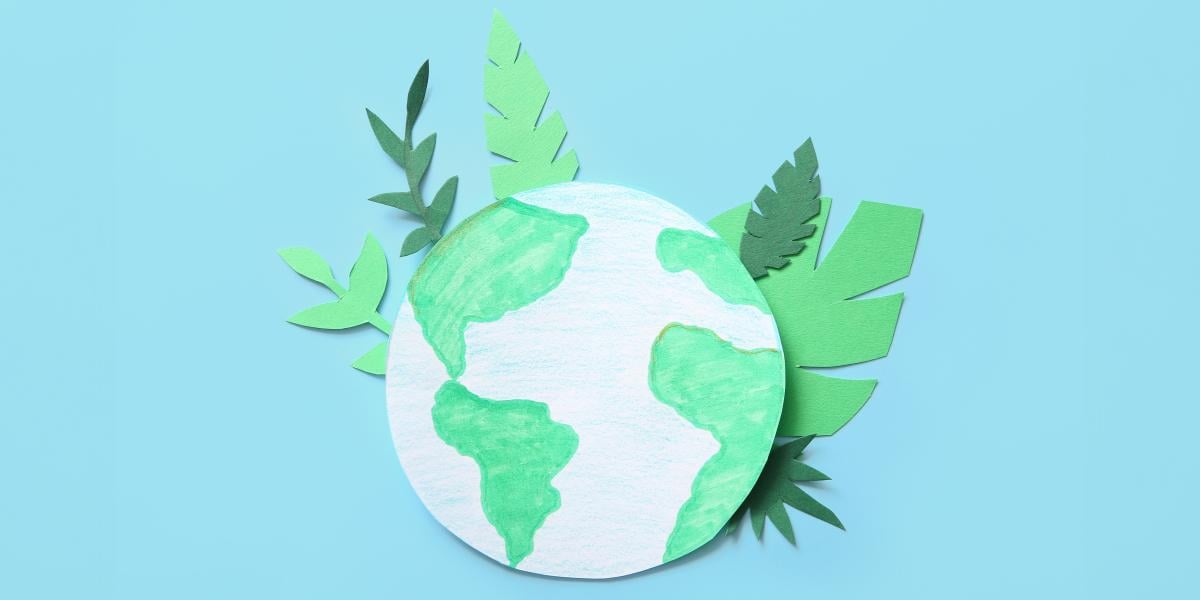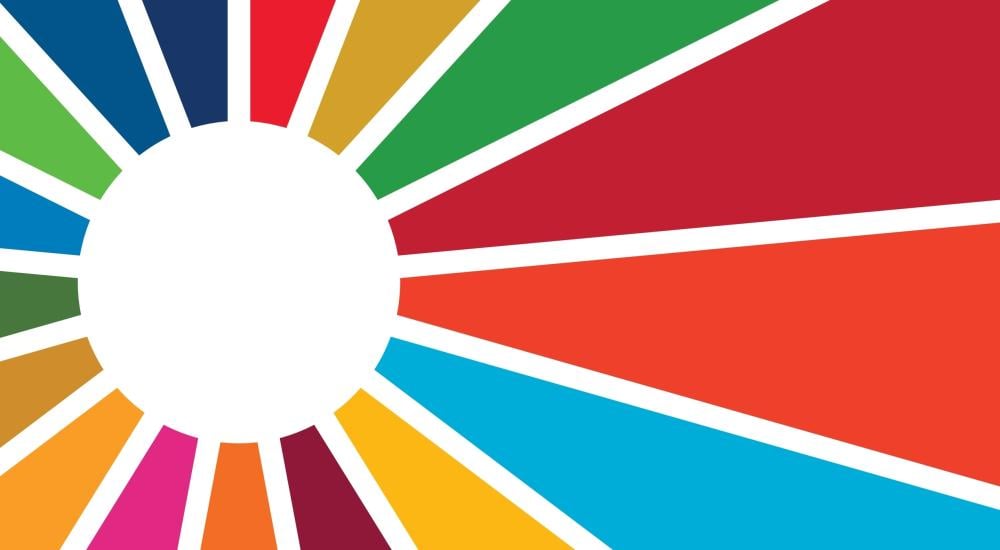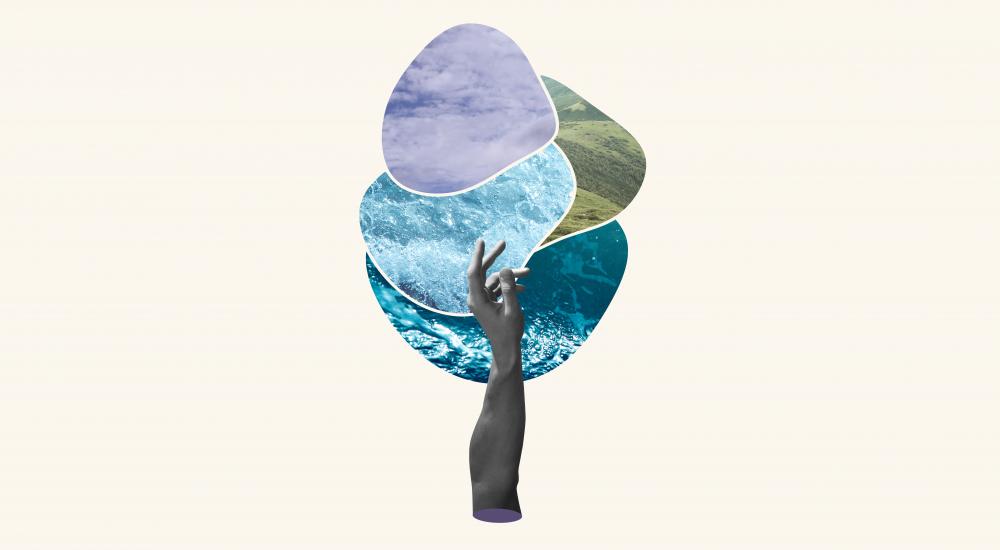Sumie Song: Moving the Needle on Sustainability

There are many ways to approach and participate in advancing sustainability efforts. Sumie Song, director of strategic partnerships for The GREEN Program, has focused her work on equipping and empowering students with climate-focused education so they can become leaders who will tackle the world’s pressing challenges.
Song shares about how her own experience shaped her interest in this work, why she chose to focus on the student experience, the role international education has to play in advancing sustainability, what students and institutions are looking for in sustainability education, the challenges to this work, and more.
Editor’s note: This interview has been edited for length and clarity.
Sustainability can mean different things to different people in different contexts. What is your definition of sustainability?
The United Nations (UN) defines sustainability in terms of 17 goals—called the Sustainable Development Goals (SDGS)—that include the eradication of poverty and hunger; gender equality; quality education; health and well-being; a just labor economy; the recognition of human rights and the dignity of work; climate action; climate-resilient communities and cities; and peace, justice, and cooperation across nations. Taken together, these goals speak to the interconnectedness and interdependence of all forms of life. For me, sustainability is synonymous with life. When we speak of creating a world that is truly sustainable—one that leaves no one behind—we are saying that life for me is life for you is life for Earth.
What’s your background in sustainability and higher education? How did you get to where you are, ultimately focusing on students and the student experience?
My path, I suspect, may mirror that of many students. I didn’t know that sustainability was an option. I took my first sustainability-related course, a course on oceanography and global warming, my final semester of college. I was smitten. When I turned in my final exam, the instructor pulled me aside and asked if I consider [majoring in the subject]. That ship, obviously, had sailed. I left college thinking maybe I’d studied the wrong thing.
It was as a grassroots organizer that I cut my teeth in climate-focused work. I worked with a group of youths who started a bicycle cooperative to promote clean, accessible, affordable transportation; to educate the community about health and wellness; and to create jobs for youth. I have been involved ever since in ward-level, citywide, and statewide climate action campaigns at the intersection of environmental, racial, and economic justice organizing.
After entering higher education, I started volunteering my time to support volunteer-led sustainability initiatives. That’s the case for many of us, I think. The students, faculty, and staff who often spearhead such projects are doing commendable work, but if we’re really going to move the needle, schools need to have a concerted, coordinated strategy. There needs to be a formal commitment on the part of the institution to align its planning with sustainability, to fully integrate sustainability into its institutional mission—into campus operations, research, and, most importantly, the academic curriculum and cocurriculum.
Every student, regardless of their major, has the right to learn about sustainability and climate action.
This is in large part the reason that I joined the GREEN Program (TGP), a global sustainability education organization whose mission is to build a diverse sustainability workforce. With an SDGs-based curriculum, we work with universities to help them embed sustainability education in courses, programs, and all other aspects of students’ learning in order to prepare the next generation of sustainability leaders to address the world’s most pressing issues. And we do so with a sense of urgency. Every student, regardless of their major, has the right to learn about sustainability and climate action. It is vitally important that young people in communities that have suffered the most harm due to the effects of environmental degradation, resource exploitation, and environmental racism are equipped and empowered to lead the transformation to a sustainable future.
Where do you see sustainability and international education overlapping? And what is international education’s role to play in advancing efforts toward sustainability?
A central aim of international education is to cultivate a sense of global awareness and responsibility to and for others. Global education makes possible the felt experience of our shared existence. Students become more curious about themselves and their role in the world, more interested in examining their models of reality, increasingly open to working with those of differing perspectives, and better able to appreciate the impact of their actions on their sisters and brothers around the world. This is what United Nations Educational, Scientific, and Cultural Organization (UNESCO) refers to as “global citizenship education” (GCED), a target of SDG 4, Quality Education.
TGP is a member organization of the UN Sustainable Development Solutions Network (SDSN), a global network of universities and their representatives that convenes meetings and workshops to push dialogue and deliberation on achieving the SDGs. Last year, we helped organize the SDSN USA Transformative Education Summit, where we set out to explore the inclusion of the SDGs in formal curricula as well as in nonformal settings, to curate and create educational resources to support educators across the United States, and to develop policy briefs highlighting the importance of investment in quality education for sustainable development. One of the most salient aspects of sustainability education that summit attendees considered was GCED, which emphasizes the importance of “knowledge about the world and the interconnected nature of contemporary challenges and threats” as well as the development of “values that reflect the vision of the world,” including “respect for diversity, empathy, open-mindedness, justice and fairness for all people.”
Students become more curious about themselves and their role in the world, more interested in examining their models of reality, increasingly open to working with those of differing perspectives, and better able to appreciate the impact of their actions on their sisters and brothers around the world.
Walter Leal Filho, the founder of the International Journal of Sustainability in Higher Education and someone who publishes widely on the state of education for sustainable development (ESD), has long argued that in order to advance sustainability, universities need to “dynamically reposition” themselves by embracing pedagogies and approaches that are experiential and globally minded and informed and that emphasize social responsibility, ethics, and equity.
In working with potential and existing university partners, what have you learned about students and their needs as well as universities and their needs, especially around sustainability programs?
Student demand is high, but access is still limited, especially for nonmajors and non-STEM students. Increasingly, U.S. universities and colleges are prioritizing sustainability education, but progress is lagging. David Hess and Brandi Collins at Vanderbilt University conducted a study examining the accessibility of climate-related courses via general education (or “core”) courses at the top 100 U.S. universities and liberal arts colleges. The findings were staggering. The probability across all schools of a student taking at least one climate-related course in the general education curriculum was 0.17.
Faculty need and want training. North Park University, a TGP partner, received an Increase and Diversify Education Abroad for U.S. Students (IDEAS) grant from the U.S. Department of State to provide sustainability education for non-STEM faculty. Faculty participated in our course in Nepal examining the feasibility of solar energy for rural development. The purpose of the grant was to give faculty the chance to learn about the transition to clean energy and its attendant challenges in a specific world region [as well as] develop and implement a plan to integrate sustainability into courses, academic programs, and schools and colleges.
Is there a partnership or project you’ve been part of at the GREEN Program that you’re particularly proud of?
In preparation for COP28, a group of more than 15 universities in Canada, Mexico, and the United States, joined forces to explore innovative ways to foster youth-led innovation for the SDGs. Led by the SDSN and the Center for Sustainable Development at Columbia University, the group held workshops and six webinars from June to October 2023, covering topics such as sustainability curriculum design, scaling and commercializing sustainable ventures, climate communications, and much more. TGP was a member of the consortium, and our work was showcased in the series for its transformative approach to educating and empowering young people to drive sustainable solutions.
At COP28, the consortium released a report, Fostering Youth-Led Innovations to Accelerate Progress on the United Nations Sustainable Development Goals: A Guide for Policymakers. The report was endorsed by former UN Secretary-General Ban Ki-moon, who states [in the foreword] that to prepare young people to “address the most pressing global challenges, education must equip all learners with the values, skills, and knowledge that nurture cooperation, resilience, respect for diversity, gender justice, and human rights.”
There are many ways to participate in advancing the SDGs. What drew you to doing this work through empowering students and the next generation and equipping them to do this work too?
Students are the best equipped to do this work, and should be given the necessary tools, resources, support, and opportunities to ensure that they succeed. I look at my own educational trajectory and wonder where I may have ended up. Here we are nearly 30 years later and we've made very little progress when it comes to sustainability education. Students today should not have to go about things in as roundabout a manner; 2030 is around the corner.
It was through organizing that I myself came to understand the intersectionalities that had shaped my experience and the multiple factors that need to be considered when addressing environmental racism. Environmental justice is racial justice. It is economic justice. It is gender justice.
Especially important is that students from the Global South, from Indigenous, Black, and brown communities, are able to access education for sustainable development. It has been shown that in every country, every city, and every neighborhood, those disproportionately impacted by environmental degradation, resource exploitation, and industrial pollution—the poor (IPCC Sixth Assessment Report, Chapter 8), BIPOC [Black, Indigenous, and other people of color] communities (EPA Report) are the most vulnerable. It was through organizing that I myself came to understand the intersectionalities that had shaped my experience and the multiple factors that need to be considered when addressing environmental racism. Environmental justice is racial justice. It is economic justice. It is gender justice.
TGP's model of sustainability education attempts to address many of the gaps that continue to exist in a system where sustainability has not been fully integrated into the curriculum. This, mind you, was among the stated goals of the American College & University Presidents' Climate Commitment, established in 2006. The Vanderbilt study was published in 2018.
What do you think are the biggest challenges that remain?
Time. We are in a race against time. 2030 is around the corner. [Another is] a lack of political will. If we were serious about this, governments would be passing robust climate mitigation legislation and regional accrediting bodies would act to incorporate ESD into the criteria, or standards, for institutional accreditation.
And something we don’t talk about enough: gender equality. To accelerate progress on the 2030 Agenda, gender equality must be integrated across the SDGs. The UN Gender Snapshot looks at gender equality across all 17 goals, detailing where women are losing opportunities to build skills; where commitment to advancing the rights, health, safety, education, and leadership of women and girls is lackluster; and where and how progress is being made.
How do you think sustainability education needs to change or evolve to meet those challenges—as well as challenges of the future?
The Fostering Youth-Led Innovations paper makes clear that it will require everyone working in concert—across education, industry, and the public sector—to equip young people with the knowledge, skills, opportunity, and support necessary to accelerate progress on the SDGs. We are at an inflection point. Young people comprise some 40 percent of the world’s population. They have a vital role to play in driving sustainable development, but access to funding, resources, sustainability education, and mentoring programs is limited. We are urging policymakers to integrate sustainability education into the academic curriculum; support training programs and workshops outside of formal classrooms to help build sustainability-related skills and competencies; create enabling environments for youth innovators by establishing innovation hubs, incubators, and accelerators and extending programmatic support, including funding, mentoring, and connections; and promote mentorship initiatives that connect young innovators with experienced advisers and professionals.
We are at an inflection point. Young people comprise some 40 percent of the world’s population. They have a vital role to play in driving sustainable development.
This summer, TGP is hosting a program in Iceland focused on clean energy and electric vehicles (EVs) for the CREATE Energy Center and technical educators across the United States. Funded by the U.S. National Science Foundation, CREATE’s mission is to provide a skilled technical workforce for the clean-energy sector. The hope is that technical educators across the country can benefit from their experience by making use of the resources they create and drawing inspiration from their ideas. Another important objective of the program is to build a network of support for educators who in many cases are the only faculty teaching about renewable energy at their institution.
How do you hope your work will contribute to overall sustainability efforts?
Since 2009, TGP has hosted more than 4,000 students, 52 percent of whom are women in STEM and 40 percent of whom identify as BIPOC. We have facilitated more than 700 capstone innovation projects and invested nearly $10 million in the local communities where we run programs. Nearly all of our in-country partners are BIPOC- and/or women-owned or -operated businesses and organizations.
A faculty member at Uppsala University has conducted a study on the immediate and long-term impacts of TGP programs on student learning and career readiness. [They found that] 95 percent of program participants reported that their knowledge about sustainability issues and awareness of their connection to the sustainability of the planet and its people had increased. Of those respondents who changed majors after completing a TGP program, 74 percent switched to a sustainability-related major or program and wanted to pursue a job in the green sector. Of those respondents who were employed at the time of the study, 50 percent were working in a sustainability role and felt they were contributing in significant ways to sustainability efforts in their field or organization.
In a certain sense, our real work begins once students complete their program, our end goal being to build a diverse sustainability workforce.
In a certain sense, our real work begins once students complete their program, our end goal being to build a diverse sustainability workforce. We continue to stay engaged with alums over the course of their careers by providing ongoing career development programs and opportunities. And they stay in touch with us. Those who are in sustainability leadership roles may ask us to help them upskill or reskill the teams they oversee, which is how our work with corporations initially began. We’re committed to continuing to create new opportunities and resources in order to expand the reach of TGP alums wanting to advance sustainability in their companies and organizations.
TGP uses language about a “multigenerational approach” to climate education and action. Can you talk a bit more about that?
TGP has succeeded in drawing students of every kind. Not just college-aged or graduate students but also working professionals, even those already working in the clean-energy sector. It’s important to recognize that those in the private sector are also in need of educational resources and opportunities. So, within a single program, you can expect to find students of a range of majors, ages, races and ethnicities, faith traditions, gender identities and expressions, political affiliations, and economic and educational backgrounds—ours is a model of lifelong learning, as a well as a microcosm, a reflection of our global community.
Several of the universities TGP partners with have also won a Senator Paul Simon Award for Comprehensive Internationalization from NAFSA. Do you think there’s any correlation between an institution’s commitments to both sustainability and internationalization?
Such schools have long sought to reimagine conventional models of international education. At some partner institutions, studying abroad is out of reach for the vast majority of students. So, the work that Simon Award recipients are doing raises questions of vital importance for the field. They invite the sort of examination of education abroad that has been missing—the ways that study abroad in its current form continues to amplify racial, social, and economic disparities. How do we ensure that global learning is accessible to all students, especially those who are historically underrepresented in education abroad? What steps can we take to address structural impediments to global learning for low-income, first-generation, racially and ethnically minoritized students, undocumented students, students who work full-time, have family obligations, and identify as having a disability? And what would it look like to create a model of education abroad based on genuine reciprocity?
These schools are reenvisioning and disrupting existing models by asking questions similar to those that inform sustainability work—questions having to do with equity, representation, justice, ethical decision-making, and mutual understanding. How, through global learning, can we work to overcome division—the sense of separateness and polarization the world is now experiencing—to build trust and restore hope, to create a future where no one is left behind? •
About International Educator
International Educator is NAFSA’s flagship publication and has been published continually since 1990. As a record of the association and the field of international education, IE includes articles on a variety of topics, trends, and issues facing NAFSA members and their work.
From in-depth features to interviews with thought leaders and columns tailored to NAFSA’s knowledge communities, IE provides must-read context and analysis to those working around the globe to advance international education and exchange.
About NAFSA
NAFSA: Association of International Educators is the world's largest nonprofit association dedicated to international education and exchange. NAFSA serves the needs of more than 10,000 members and international educators worldwide at more than 3,500 institutions, in over 150 countries.
NAFSA membership provides you with unmatched access to best-in-class programs, critical updates, and resources to professionalize your practice. Members gain unrivaled opportunities to partner with experienced international education leaders.















